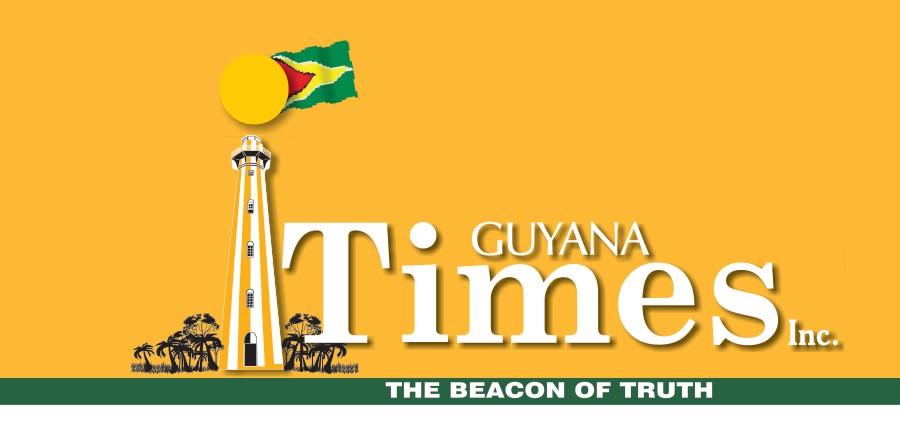With a focus on both traditional resources like gold and non-traditional ones like lithium, the Guyana Government has rolled out the geophysical survey aspect of the Mineral Mapping Project – an exercise that would bridge data gaps, reduce investment costs and minimise the environmental impacts from mining activities.
This geophysics survey will see two specialised aircraft, equipped with high-end technology and sensors, conducting flyovers at four major mining districts across the country – the NorthwestMining District, the Mazaruni Mining District, the Potaro Mining District and the Puruni Mining District – to gather key data that will identify the highly mineralised areas and will be used to create a local mineral portal.

Back in August 2024, the Guyana Government signed a multi-year contract with United States (US)-based Global Venture Consulting Inc to produce maps to show, among other things, where gold and other mineral deposits are located around the country.
Flyovers
Some $4 billion has been set aside for this project. The airborne geophysical survey will commence in the coming days by experts from Xcalibur Smart Mapping and Aries Aviation International and is likely to wrap up by year-end.
Jared Abraham, one of the US-based geologist/geophysicist experts conducting the survey, explained that the flyovers will be done at 80 metres above the ground with the aircraft moving at 250 kilometres per hour and 70 metres per second.
“In one flight, we’re collecting more data than you can do on the ground within a year or maybe two years… It’s building on the products that all of you have done for years – it’s not erasing that data, it’s augmenting it and connecting the dots,” the US expert stated at the launch of the survey exercise on Wednesday.
Abraham noted that during the aeromagnetic surveys, they will be able to detect traces of rare earth minerals, though they would not be able to see them. He added too that the technology they are using will also pick up deposits of uranium and lithium.
Much more than gold
Guyana is estimated to have deposits of lithium, whose uses extend far beyond rechargeable batteries.
In fact, the head of the Guyana Geology and Mines Commission (GGMC), Newell Dennison, pointed out that this initiative is much more than just gold.
“It’s about an organised inventory of our mineral resources. It is about the geological and geochemical and structural relationships of our massive mineralised terrains; their influence on the locations; their accessibility and availability for exploitation, which in turn contributes to how we plan to invest and how we garner investments at the various scales of operations; and how we can prepare ourselves for another significant episode of future and futuristic commercial technology-driven industrial endeavours,” he noted.
The GGMC Commissioner pointed out that this survey will not identify exactly where operators should mine but will give them an understanding of the area so that they can better deploy their resources for a greater likelihood of success.
“We want not to have willy-nilly adventurism into the mining estate. We want persons to be much more predictive of where they’re going to put their resources and, therefore, from our perspective, be more efficient in terms of finances and, of course, better outcomes for our national coffers,” Dennison stated.
The data gathered from this survey will be added to the legacy data that has been previously collected locally. The last Mineral Bulletin (No 38), which was published in 1968.
Sustainable management
Meanwhile, this mineral mapping project will also address approaches to sustainably manage and grow the extractive sectors within the context of Guyana’s Low Carbon Development Strategy (LCDS) 2030. When completed, the Mineral Inventory will contribute to low-impact mining and improve planning in mineralised areas, which are objectives outlined in the LCDS 2030.
Natural Resources Minister Vickram Bharrat, also speaking at Wednesday’s launch event, noted the mineral mapping exercise will be a roadmap to balancing economic development with environmental sustainability.
“This is a project that will enhance our reputation as a country, that will enhance the mining sector, that will show greater environmental stewardship while we continue to develop our country and create opportunities for our people. So, it’s a project where Guyana cannot lose… It’s a project that will help especially our small- and medium-scale miners…”
“There aren’t many countries around the world that can boast of having the similar kind of success when it comes to balancing economic development with environmental sustainability as Guyana has done over the years. So, advancing this project is very critical,” the Minister posited.
According to Bharrat, this project is also a show of confidence by the President Dr Irfaan Ali-led Administration of its commitment to support the local mining industry, which not only contributes significantly to the country’s development but also employs nearly 30,000 persons, especially those from hinterland communities.
Capacity building
In addition to the mapping exercise, Global Venture (GV) has also been conducting capacity-building exercises with the technical staff at GGMC as part of its contract. The aim is to ensure that there is local capacity to take over the mineral mapping process when the contract elapses.
“The lasting legacy of this programme is not just the data; it’s the people. Throughout this programme, GV, GGMC and our partners are working side by side to share the methods, tools and workflows so that the capability to manage, interpret and apply this data remains and lives here in Guyana after this programme is finished,” CEO of GV, Emily King, posited.
Discover more from Guyana Times
Subscribe to get the latest posts sent to your email.











